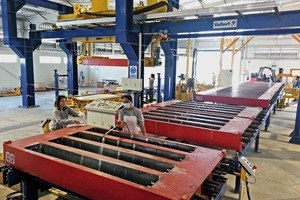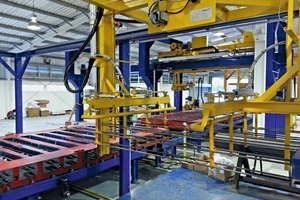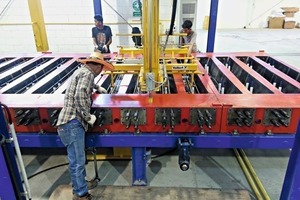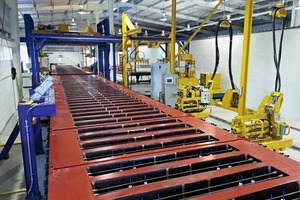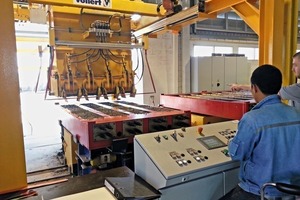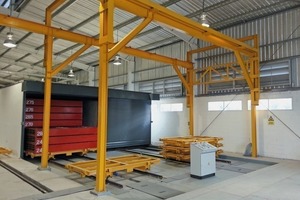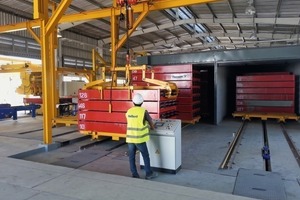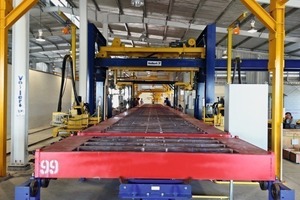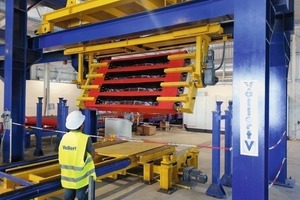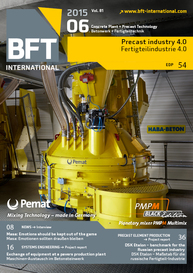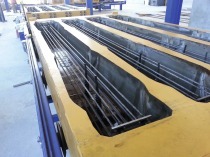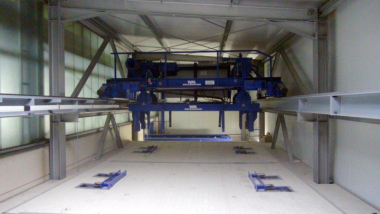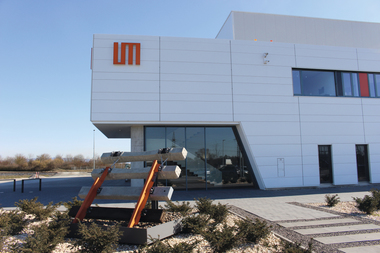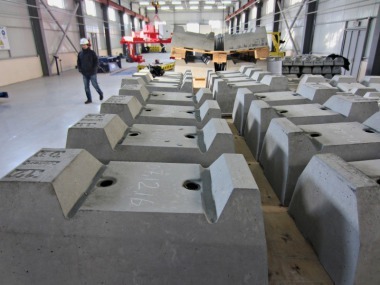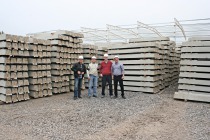Prestressed concrete sleepers for Thailand’s major railroad construction projects
Over the next five years, Thailand is planning several major railroad construction projects as to provide a better link between the metropolises and the less-developed rural area. The Strabag Group will supply a total of 1.73 million prestressed concrete sleepers for the rail network of these projects.
Thailand has seen a rapid economic boom since the 1970 s. This happened in a much shorter period than in Taiwan or South Korea, for example. In spite of the current political instability and a growth rate of only 5 %, the country continues to focus on expanding the industrial sector, that contributes 45 % of the total gross national product, besides tourism. For this reason, the government is investing in infrastructure development. There are plans for several major railroad construction projects to be accomplished over the next years, providing a better link between Thailand’s metropolises and the less-developed rural area. The Strabag Group will supply an essential part of the equipment for the rail network of these projects.
Over the next five years, the globally operating construction group Strabag will supply a total of 1.73 million railroad sleepers for the upcoming infrastructural projects for expanding Thailand’s traffic system. In this regard, Thailand opts for the prestressed concrete sleeper, which is more and more replacing steel and wooden sleepers. The material concrete is more durable, requires less maintenance and is more economically friendly as no coal tar oil is need for impregnation. “In order to produce the large output quantities, we have decided to invest in an ultra-modern precast concrete plant with intelligent circulation system and innovative machine solutions, for which we broke ground around 50 km southeast of Bangkok mid 2014”, describes Torsten Spangenberg, Head of Business Unit Railway Infrastructure at Strabag. In respect of technology and expertise, the company relied on Vollert as one of the worldwide leading specialists in plants for the production of prestressed concrete sleepers.
High degree of automation and intelligent plant structure
The modern plant circulation system is designed for an annual capacity of more than 600,000 prestressed concrete sleepers of type B70. This corresponds to an output of more than 2,000 concrete sleepers per day. Up to 270 molds are permanently used in the circulation system, providing for much more efficient processes and thus higher plant productivity, in comparison to a stationary production line.
“We focus on a high degree of automation in the new precast concrete plant, from the installation of dowels, to the tensioning and detensioning stations to the placing of concrete. An optimum coordination of all workflows is very important so that idle times are avoided and a smooth operation of the machine technology is ensured,” states Steffen Schmitt, Executive Sales Director Asia at Vollert. “This already starts with production planning.” Following the demolding process, the quadruple sleeper molds are oiled and cleaned, before installing the dowels required for the subsequent fastening to the rails. To ensure an ergonomic work process, the concrete mold is carried from a roller conveyor to a chain conveyor system. In this way, the entire operation area is freely accessible. Furthermore, safety mats are installed in this operation area, ensuring a high degree of workplace safety. In the next step, a reinforcement inserting manipulator installs the prepared prestressing wires in the concrete mold. After manually fastening the individual wires with the tensioning bolts and anchor bolts already installed in the mold, the prestressing steel bars are tensioned with a prestressing force of 460 kN in a semi-automated process. The Paul screw jack is constantly monitoring the tightening torque of each prestressing wire. The quadruple mold is then lifted from the roller conveyor system to the combined casting and vibrating station by means of lift shuttles linked to each other. The semi-automated concrete distributor moves along a bridge structure between the concrete mixing station situated in the outside area and the concreting line inside the production building. Electrically driven discharge screws are filling the concrete into the mechanically fixed mold with high precision. A high-frequency vibration station provides for uniform concrete compaction.
1,600 concrete sleepers curing simultaneously
Then a special lifting beam, situated in the outlet area of the concreting line, stacks up to eight concrete molds on one of the prepared transverse travel trolleys. They are passing the insulated curing chamber through rail-mounted furnace lines situated in parallel, at predefined cycle times. Here up to 1,600 concrete sleepers are curing simultaneously. In the exit area a chain pusher pulls one transverse travel trolley at a time out of the curing chamber, following a curing time of about 13 hours. Subsequently, the tension reversal process is initiated via a semi-automated detensioning station of Paul. For this purpose, the prestress is released into the concrete sleepers. “A highlight here certainly is the bridge-type turning spreader beam moving the released concrete mold into the outlet area, turning the same by 180 degrees and lowering it to the roller conveyor system, before an electric lifting device removes the sleeper from the mold. This is a highly efficient and economical solution, according to Steffen Schmitt.
Sustainably high quality level achieved
The railroad sleepers are delivered ready for installation. Therefore, the entire reinforcement has been inserted and prestressed in accordance to standards. The rail fastening is also ready installed. “Another quite important detail for the high quality level, which we intended to achieve,” Torsten Spangenberg points out.
Apart from this target quality level, the required output quantity was also achieved through the high degree of automation, particularly, of the machine technology, the transport circulation system and an intelligent management system. The company is now in the position to realize the planned contract volume of the next five years. The period between the proposal preparation and the production of the first railroad sleeper lasted less than half a year.

